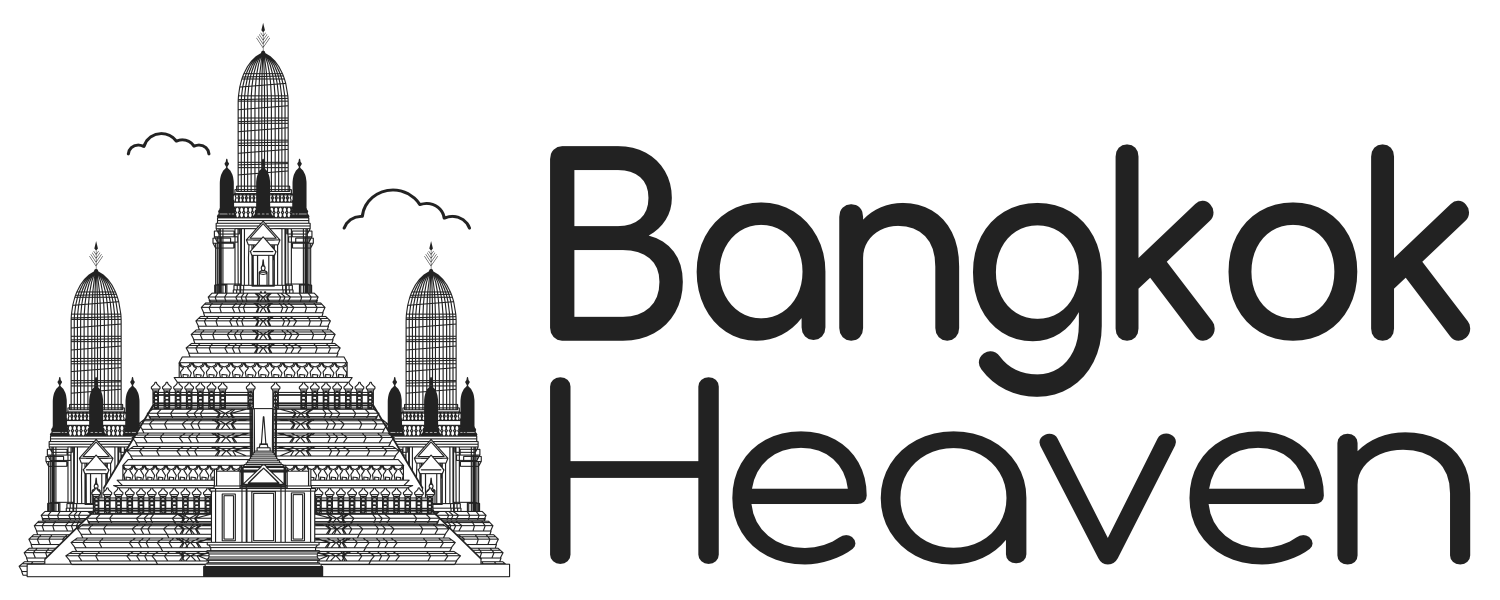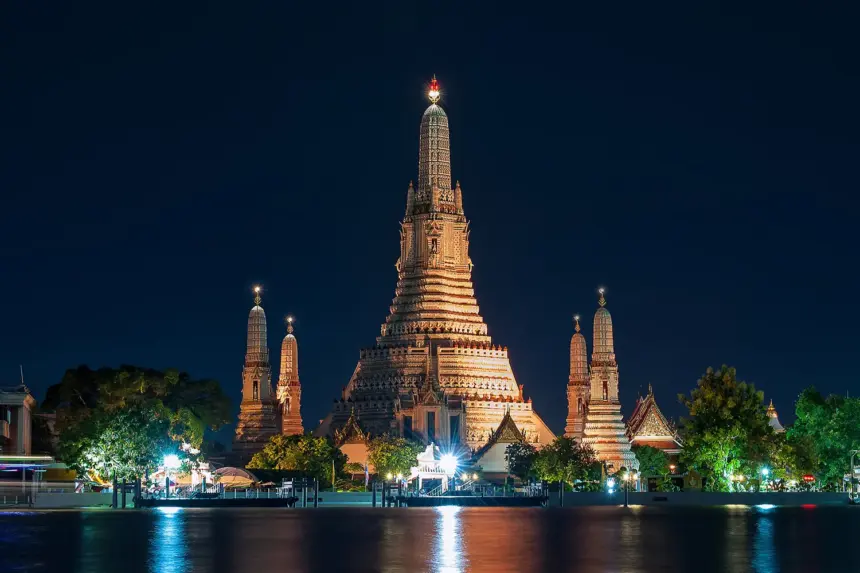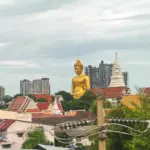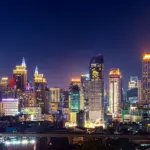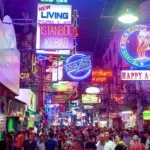Wat Arun: The Temple of Dawn and Bangkok’s Iconic Riverside Landmark
Wat Arun, also known as the Temple of Dawn, stands as one of Bangkok’s most iconic and visually stunning landmarks. Located on the west bank of the Chao Phraya River, this majestic temple is a symbol of Thailand’s rich cultural heritage and spiritual devotion. With its soaring central prang (spire), intricate mosaics, and riverside setting, Wat Arun offers a unique blend of architectural grandeur and serene beauty. This article explores the history, architectural significance, cultural importance, and visitor experience of Wat Arun, providing an in-depth look at why this temple is a must-visit destination in Bangkok.
The Historical Significance of Wat Arun
Wat Arun’s history dates back to the Ayutthaya period, making it one of Bangkok’s oldest and most historically significant temples. The temple’s original name was Wat Makok, named after the area it was located in, which was then a small village on the outskirts of the city. The temple was later renamed Wat Chaeng when King Taksin established the Thonburi Kingdom after the fall of Ayutthaya in 1767. According to legend, King Taksin arrived at this temple at dawn after fleeing the burning capital, and as a mark of reverence, he renamed the temple Wat Chaeng, meaning “Temple of Dawn.”
However, it wasn’t until the reign of King Rama II in the early 19th century that Wat Arun began to take on its current form. King Rama II initiated the restoration and expansion of the temple, including the construction of the towering central prang, which would become the temple’s most distinctive feature. The project was completed by King Rama III, who added the intricate decorations that make Wat Arun one of the most visually captivating temples in Thailand.
The Architectural Marvel of Wat Arun
Wat Arun is renowned for its stunning architecture, which reflects the artistry and religious devotion of the Thai people. The temple’s design is a unique blend of Khmer and Thai architectural styles, with influences from Hindu cosmology. The central prang, in particular, is a masterpiece of craftsmanship and engineering, rising 70 meters above the riverbank and dominating the Bangkok skyline.
The Central Prang and Satellite Prangs
The central prang of Wat Arun is the temple’s most iconic feature. This towering spire represents Mount Meru, the sacred mountain at the center of the universe in Hindu and Buddhist cosmology. The prang is flanked by four smaller satellite prangs, each representing one of the four directions. Together, these prangs create a symmetrical and harmonious composition that embodies the balance and order of the cosmos.
The prangs are adorned with intricate mosaics made from colorful Chinese porcelain and seashells, which were brought to Thailand as ballast on trading ships. These mosaics form elaborate patterns and motifs, including flowers, mythical creatures, and celestial beings. The use of porcelain gives the prangs a shimmering quality, particularly when viewed in the early morning light or at sunset, when the temple appears to glow with an ethereal radiance.
Visitors can climb the steep steps of the central prang to reach a series of terraces that offer panoramic views of the Chao Phraya River and the surrounding cityscape. From this vantage point, one can appreciate the intricate details of the temple’s decorations as well as the grandeur of Bangkok’s skyline.
The Ordination Hall (Ubosot)
The ordination hall, or Ubosot, at Wat Arun is another architectural highlight. This sacred hall is where important religious ceremonies, such as ordinations and meditation sessions, take place. The Ubosot is surrounded by a gallery that houses 120 Buddha images, each representing a different pose and moment in the Buddha’s life.
Inside the Ubosot, the main Buddha image is a serene representation of the Buddha in the Maravijaya posture, symbolizing the moment of his enlightenment. The walls of the hall are adorned with murals that depict scenes from the Ramakien, the Thai version of the Indian epic Ramayana, as well as other Buddhist stories. These murals are a testament to the skill of Thai artisans and offer visitors a glimpse into the spiritual and cultural heritage of Thailand.
The Mondop and the Giant Statues
The Mondop is a square building that houses important religious relics, including a footprint of the Buddha. The Mondop at Wat Arun is notable for its elaborate roof, which is decorated with intricate carvings and gilded details. The building is surrounded by beautifully landscaped gardens, providing a tranquil setting for reflection and meditation.
At the entrance to the temple complex, visitors are greeted by two towering statues of the yaksha, or guardian demons, who are said to protect the temple from evil spirits. These statues, known as Sahassa Deja and Thotsakan, are depicted in vibrant colors and fierce postures, adding a sense of drama and grandeur to the temple’s entrance.
The Cultural and Religious Significance of Wat Arun
Wat Arun holds a special place in the hearts of the Thai people, not only for its architectural beauty but also for its deep religious and cultural significance. The temple is dedicated to the Hindu god Aruna, the charioteer of the sun god Surya, who is believed to be responsible for the dazzling light of dawn. This association with the rising sun makes Wat Arun a symbol of new beginnings, spiritual enlightenment, and the triumph of light over darkness.
Wat Arun as a Place of Worship
As an active Buddhist temple, Wat Arun is a center of religious worship and spiritual practice. Monks reside at the temple, and daily rituals, including chanting and meditation, are performed in the various halls and shrines. The temple is also a popular destination for merit-making, a key practice in Thai Buddhism, where devotees offer food, flowers, and other gifts to the monks as a way of earning merit for themselves and their families.
During major Buddhist festivals, such as Visakha Bucha (which commemorates the birth, enlightenment, and death of the Buddha), Wat Arun becomes a focal point of religious activities in Bangkok. Thousands of devotees flock to the temple to participate in candlelit processions, prayers, and other religious observances, reaffirming their faith and devotion.
Wat Arun in Thai Culture
Wat Arun is more than just a religious site; it is a cultural icon that has been featured in countless works of art, literature, and film. The temple’s image is often used to represent Bangkok and Thailand as a whole, symbolizing the country’s rich cultural heritage and spiritual depth. The temple is also depicted on the 10-baht coin, further cementing its status as a national symbol.
The association of Wat Arun with the dawn has made it a popular subject for photographers and artists, who are drawn to the temple’s luminous beauty at sunrise. The sight of the sun rising behind the central prang, casting a golden glow over the temple and the river, is one of the most iconic images of Bangkok.
Visiting Wat Arun
For visitors to Bangkok, a trip to Wat Arun is a must. The temple’s riverside location makes it easily accessible by boat, offering a scenic and leisurely way to reach the temple. Many visitors choose to visit Wat Arun as part of a larger tour of the city’s riverside attractions, which include the Grand Palace, Wat Pho, and the bustling markets of the Chao Phraya River.
Practical Information for Visitors
Wat Arun is open daily from 8:00 AM to 6:00 PM, and there is a modest entrance fee for visitors. The best time to visit is early in the morning or late in the afternoon when the temple is less crowded, and the lighting is ideal for photography. Sunset is also a popular time to visit, as the temple’s mosaics take on a warm, golden hue in the fading light.
When visiting Wat Arun, it is important to dress modestly, as it is a place of worship. Visitors should wear clothing that covers their shoulders and knees, and they should remove their shoes before entering the temple buildings. Photography is allowed, but visitors should be respectful and avoid disturbing worshippers.
Exploring the Surrounding Area
After visiting Wat Arun, visitors can explore the surrounding Thonburi district, which offers a glimpse into Bangkok’s historic and cultural heritage. The nearby Wat Kalayanamit and the Santa Cruz Church are also worth a visit, offering contrasting examples of Thai and European religious architecture. The area is also home to several traditional markets, where visitors can sample local food, buy souvenirs, and experience the vibrant street life of Bangkok.
Conclusion
Wat Arun, the Temple of Dawn, is not only one of Bangkok’s most iconic landmarks but also a symbol of Thailand’s rich cultural and spiritual heritage. With its towering prang, intricate mosaics, and riverside setting, Wat Arun offers a unique blend of architectural beauty and religious significance. Whether you are drawn by its historical importance, its stunning views, or its serene atmosphere, a visit to Wat Arun is an unforgettable experience that captures the essence of Thailand’s enduring charm and timeless appeal.
